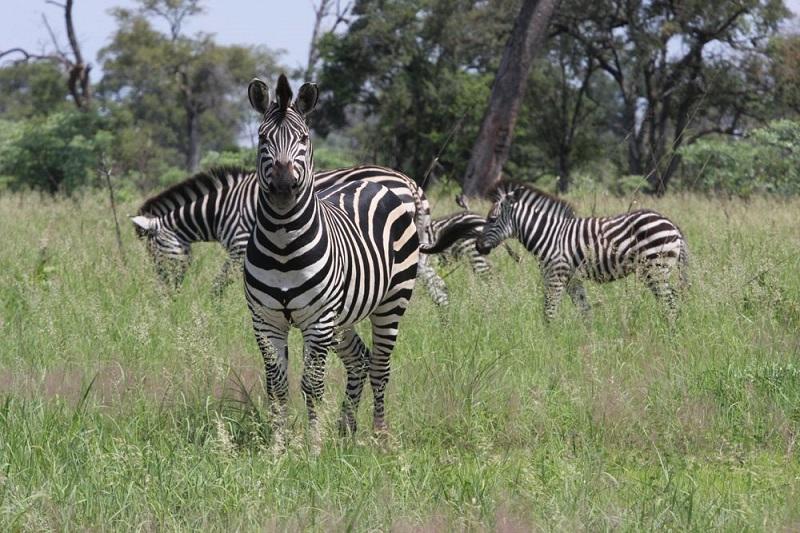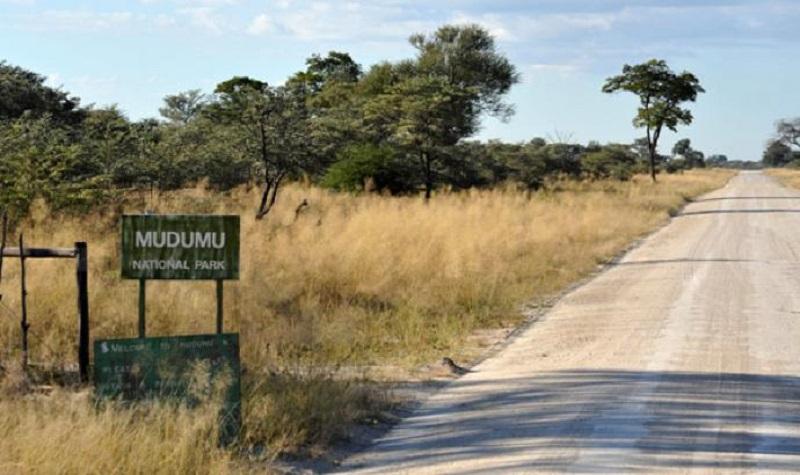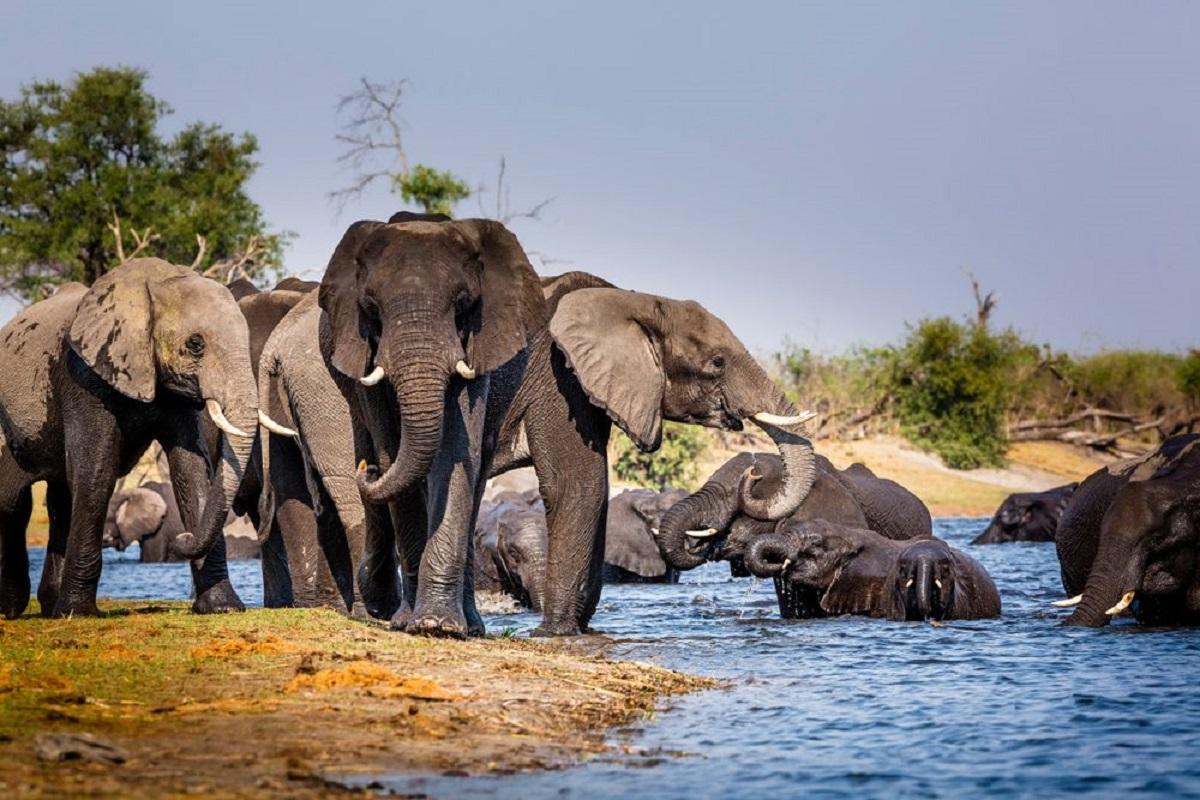Located in the northeastern corner of Namibia, Mudumu National Park is an often-overlooked sanctuary of wildlife, offering a quiet retreat into the heart of the Zambezi Region. Despite its relatively low profile compared to more famous parks like Etosha, Mudumu has become a sought-after destination for those in the know.
Today, many are drawn by its pristine landscapes, diverse ecosystems, and abundant wildlife. There are so many highlights that make this national park a beautiful escape besides the wildlife. Here, you’ll find dense mopane woodlands as well as Kalahari trees that shelter the animals. Here’s our comprehensive guide to Mudumu National Park;
Please Download Our Mobile App here.
Overview of Mudumu National Park
Founded in 1989, Mudumu National Park is one of five national parks located in Namibia’s Zambezi region, alongside Bwabwata, Mangetti, Nkasa Lupala, and Khaudum National Park. These parks are part of the larger Kavango–Zambezi Trans-frontier Conservation Area (KaZa TFCA), a crucial wildlife migration corridor linking Angola, Botswana, Namibia, Zambia, and Zimbabwe.
The park’s main attraction is its riverine habitat along the Kwando River, where wildlife is steadily recovering, providing excellent opportunities for animal sightings. Inland, the park features the Mudumu Mulapo, a fossilized river course that adds an intriguing historical layer to the landscape.
Additionally, the park’s dense mopane woodlands serve as a shelter for various woodland species, creating a diverse and thriving ecosystem that captivates nature lovers and wildlife enthusiasts alike. Mudumu is located 1,150 km from Windhoek and about 116 km from Katima Mulilo near the Zambian border.
The national park is divided into several concessions, offering designated tourism and recreation areas. This ultimately promotes local employment and reduces human-wildlife conflict through sustainable hunting and safari initiatives.
Wildlife in Mudumu National Park

Mudumu National Park is home to a diverse array of wildlife. These mostly thrive in its riverine ecosystem along the Kwando River, where lush groves of wild syringa, leadwood, mopane, and mangosteen trees create a rich environment. The park has a flat terrain, abundant water in the southern region.
This ultimately supports a wide range of animals, including zebra, sitatunga, impala, eland, red lechwe, kudu, roan antelope, oribi, giraffe, buffalo, hippo, crocodile, and elephants. You’ll also find over 400 species of birds, such as the western-banded snake eagle, African fish eagle, and African skimmer.
Adventurous visitors may also encounter predators like leopards, lions, cheetahs, African wild dogs, spotted-necked otters, and spotted hyenas. Recently, sable antelopes have also been successfully reintroduced to the park. The park was greatly affected by poaching in the early 2000s but conservation efforts have been stepped up and these barbaric acts have greatly reduced in the past few years.
Best Time to Visit Mudumu National Park
The best time to visit Mudumu National Park is during the dry season, from June to October. October is the hottest but arguably the best month to view the animals in their natural habitat. The dry conditions make wildlife gather around the park’s water holes, and the thinner vegetation allows for easier sightings.
Birdwatching is also excellent during this period, as many of the park’s resident species are more visible. The weather is cooler, with mornings often chilly (averaging 50°F) and afternoon temperatures around 81°F.
In contrast, the wet season (November to April) is less ideal due to heavy rains that can make roads impassable. January and February are the peak wet season months and should be avoided altogether.
Getting to Mudumu National Park

Getting to Mudumu National Park by road is strenuous but also adventurous if you’re open-minded. Mudumu National Park is located about 1,150 kilometers (715 miles) from Windhoek, the capital city of Namibia. The national park is situated in the Zambezi Region, and most visitors access it via a self-drive safari, although road conditions can be poor and sometimes unnavigable.
For those flying into Namibia, the journey typically begins at Hosea Kutako International Airport (WDH), located 40 kilometers (25 miles) east of Windhoek. Upon arrival, you can rent a 4×4 vehicle for the drive to the park.
Alternatively, visitors can opt for a fly-in trip, taking charter flights between various parks and lodges. Lianshulu Lodge is located within Mudumu National Park and has its own private airstrip, providing direct access to the park for those flying in.
Other Activities in Mudumu National Park
Mudumu National Park offers a variety of activities that allow visitors to immerse themselves in its natural beauty and diverse wildlife. Guided by experienced rangers, walking safaris are the most famous. These provide an adventurous and intimate way to explore the park’s rugged landscapes and view wildlife from a different perspective.
Birdwatching is another popular activity, with over 400 species to spot throughout the park. For those staying at private lodges like Lianshulu, guided game drives and boat trips along the Kwando River are available, as well as relaxing sunset cruises. Also, cultural outings to the Lizauli community and catch-and-release fishing on the river offer enriching experiences beyond wildlife viewing.
Park Fees in Mudumu National Park

Mudumu National Park offers a straightforward pricing structure for visitors, with park fees and car fees applicable. For international visitors, the park fee is 100 NAD (about $5.60), while SADC nationals pay 70 NAD (about $3.90). Camping remains free of charge.
The park also charges car fees depending on the vehicle’s seating capacity. You’ll pay 50 NAD (about $2.80) for vehicles with up to 10 seats and 100 NAD (around $5.60) for 11 to 25 seats. Typically, the more the seats, the higher the charge.
FAQs
How much does a walking safari cost in Mudumu National Park?
The cost of a walking safari in Mudumu National Park varies depending on the tour package and group size. African safari prices can range significantly, typically between $125 and $1,500 per person per night. Budget safaris generally start around $150 per night, while mid-range options average $350 per night, and luxury safaris can cost around $750 per night.
These prices often include guided walking safaris, game drives, and other park activities, with the final cost influenced by the level of accommodation and additional services included in the package.
Can you visit Mudumu National Park on your own?
Yes, you can visit Mudumu National Park on your own, but it’s important to be prepared for the challenges posed by its remote location. The park’s rugged terrain requires a 4×4 vehicle, and it’s recommended to have good navigational skills to ensure safe travel. During the rainy season, it’s advisable to travel with two vehicles for added security.
Permits are required to enter the park. These can be obtained at the Ministry of Environment and Tourism (MET) offices in Windhoek, Katima Mulilo, Susuwe, and Nakatwa. Ensure you have the necessary permits and equipment before embarking on your self-drive adventure.
Conclusion
Mudumu National Park offers an extraordinary escape for travelers looking to explore the hidden wilderness of Namibia. With its rich biodiversity, breathtaking landscapes, and abundant wildlife, it provides a serene and authentic safari experience. Whether you’re camping under the stars or cruising along the Kwando River, Mudumu promises an adventure that will leave a deep appreciation for the wild heart of Namibia.



